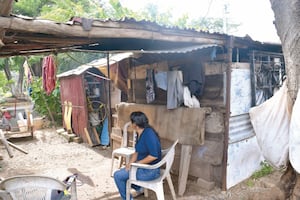Más Información
Mundial 2026 genera riesgo de fraudes y reventa, alerta Concanaco; sugiere desconfiar de enlaces y ofertas en redes sociales

Marco Rubio destaca labor de seguridad de México; "están haciendo más que nunca en su historia", afirma

Inegi oficializa creación de nueva instancia para medir la pobreza, tras desaparición del Coneval; crea una Dirección General

Juez frena revocación de testigo protegido a Raúl Rocha; da medida cautelar a dueño de Miss Universo

Sin garras y con lesiones Profepa rescata a león amarrado a un árbol en Nayarit; inician investigación
“ Mexico will not keep importing ventilators,” asserted Marcelo Ebrard Casaubón, head of Mexico’s Foreign Affairs Ministry (SRE), after announcing the ventilator created by the “Salvador Zubirán” National Institute of Nutrition and Medical Sciences was approved by the Federal Commission for Protection Against Sanitary Risks (COFEPRIS).

“What we see are coordination efforts to strengthen the duties against the pandemic. In record time, from April 3 to some weeks ago, they developed a ventilator that is already approved by COFEPRIS and that has an excellent performance, hence, Mexico will no longer import ventilators,” said the Minister during the presentation of results at the Mexican Health Foundation,
The Mexican official asserted that the federal government, along with the National Institute of Nutrition and the private initiative, will be in charge of distributing this medical equipment throughout the country.

“There was an irregular coverage of ventilators , therefore, this production will help solve the problem. We can increase the capacity with less investment. We will go on with more treatments and we will keep organizing more things.”

Recommended:
Likewise, Héctor Valle, president of FUNSALUD, informed that so far, they have delivered 3,000 ventilators and more deliveries will be done next week. “Today, we are united by gratefulness for all those who have worked in this great project, institutions, health experts, businessmen, and more. It’s everyone’s duty to contribute,” he said.
A Mexican-made, Mexican-designed ventilator , meant to overcome an international shortage of the machines and at a lower price, is already in service at hospitals here.
A rugged device that operates with bottled oxygen, the ventilator known by the unwieldy name of “VSZ-20-2” has its own back-up power source. It was designed by experts at the Salvador Zubirán National Institute of Medical Sciences and Nutrition and is made by a consortium of about 15 companies.
Dr. Guillermo Domínguez Cherit, the institute’s head of critical care, said Monday the machine has already helped treat nine patients . Cherit said it was easy to transport, clean, and set up, saying, “This is a ventilator that was designed especially for the pandemic.”
Ebrard said about 800 people in Mexico — designers, doctors, technicians, and workers — participated in the project. About 185 of the machines have been produced so far and are making their way into hospitals. And they cost about $12,000 — far below the price of many commercially produced models on the international market.
Officials said Mexico can now produce as many as 500 machines per week if needed.
The project is one of many around the world that was launched as the COVID-19 pandemic spread and authorities became alarmed about a shortage of ventilators — and their high costs — needed to treat patients.
Fanny Alvarado Chávez was the chief of the institute’s Department of Biomedical Engineering when the call went out in early March to find ventilators quickly “because we did not have enough to face this pandemic.”
“We started to look for ventilators in Mexico and the international level, but there weren’t any, and what few there were, were very expensive,” Alvarado Chavez said. So she and her colleagues dug out a 30-year-old experimental machine that had never been mass-produced, to see what worked and what needed to be brought up to present-day standards.
It had to be simple to use in environments with little infrastructure, and so it was designed to filter its own air rather than relying on hospital wall outlets that might not be available. That means it can be used in the emergency expansion hospitals that the government has set up at convention centers, hospital parking lots, and even at Mexico City’s Formula 1 track.
The needs were urgent and it would have taken two years to ramp up production themselves. So the group got help from the Mexican government, which hooked them up with manufacturers in the northern city of Monterrey that could produce the parts.
Biomedical Engineer Juan Jesús Mejía Fernández said that the ventilator’s piston-driven design and mechanical valves also help to save scarce oxygen and require fewer foreign-made parts.
“It has been proven that this is a totally robust” machine, Mejía Fernández said, noting that one test ventilator has already been working 50 days without interruption.
“Developing this required collaboration among engineers, companies, doctors, veterinarians (because animals were used in testing. ... It was so many people that were needed to get this done,” he said.
Ramses Galaz Méndez, the director of the GCE Biomedica company, which helped in the development and production process, said “the big challenge was how to bring together 15 companies, 15 institutions, in a joint collaboration on design and development in just 10 weeks.”
“To develop a machine typically takes four, five, six years,” he said. “We were racing under the deadline because we had to do it in just 10 weeks.”
mp
Noticias según tus intereses
[Publicidad]
[Publicidad]









